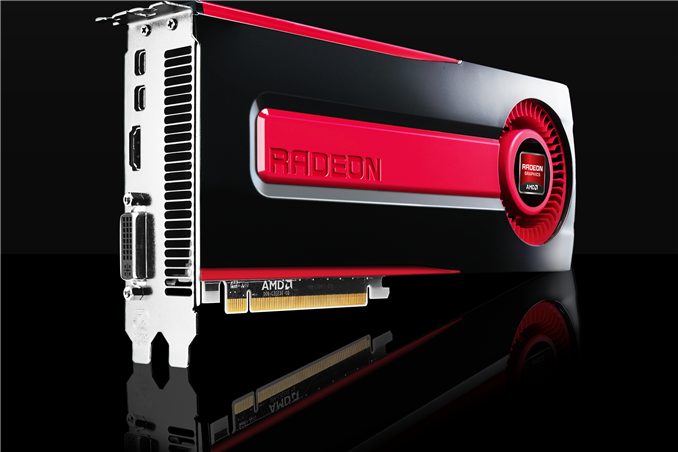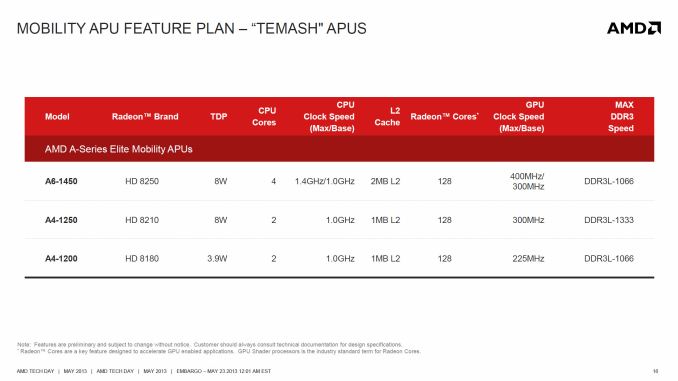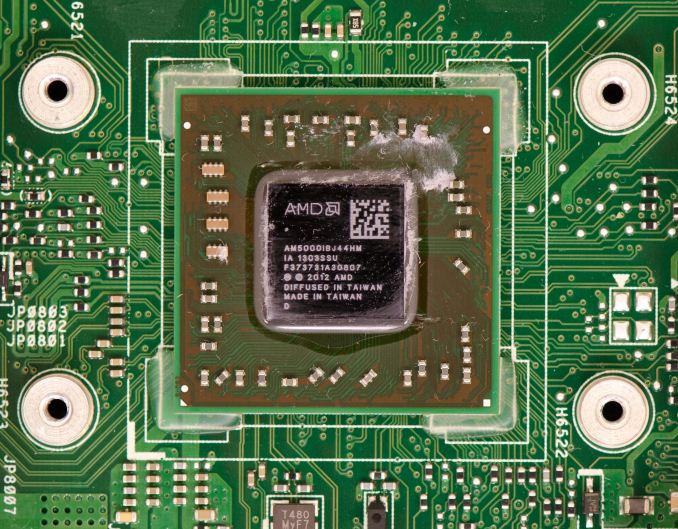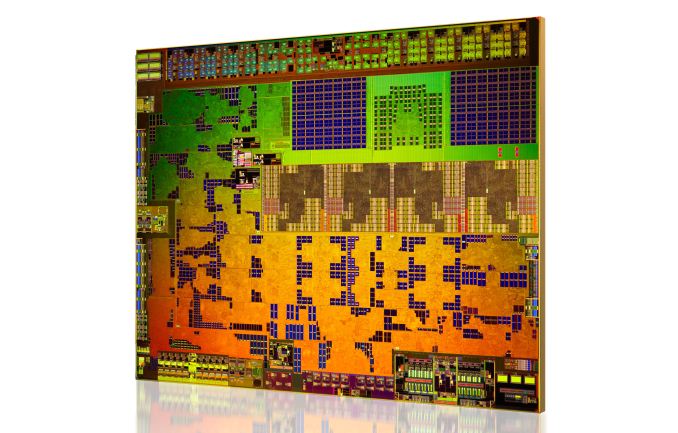Results 2,911 to 2,920 of 12095
Thread: Anandtech News
-
05-20-13, 01:00 PM #2911
Anandtech: AMD Continues Assembling Dream Team: Sean Pelletier from NVIDIA Tech Marke
Last year AMD was hemorrhaging talent. While we don't have a good indication of the extent of the talent exodus, Qualcomm seemed to benefit quite a bit from the tough times that had fallen on AMD. AMD PR mounted the beginnings of a turnaround with the announcement that Jim Keller, former K8 architect and chip-head at Apple had rejoined the company. Then came John Gustafson and last month, we got word that Raja Koduri rejoined as well - also after a multi-year stint at Apple.
Today I just got word from a couple of very accurate and trusted sources that my old friend Sean Pelletier will be joining AMD as well. Sean will abandon his role as Senior Technical Marketing Manager at NVIDIA to assume a similar role at AMD, initially focusing on GPUs. Reporting on individual hires doesn't actually tell you a lot about talent within a company, but it can give insight into whether or not a company is viable. Not too long ago, leaving Apple, NVIDIA or pretty much any other tech company to join AMD sounded like a career death sentence. The fact that smart folks from all paths are considering AMD as an option for long term employment tells us a lot about how things have changed.
More...
-
-
05-22-13, 07:30 AM #2913
Anandtech: The Xbox One: Hardware Analysis & Comparison to PlayStation 4
It’s that time of decade again. Time for a new Xbox. It took four years for Microsoft to go from the original Xbox to the Xbox 360. The transition from Xbox 360 to the newly announced Xbox One will take right around 8 years, and the 360 won’t be going away anytime soon either. The console business demands long upgrade cycles in order to make early investments in hardware (often sold at a loss) worthwhile. This last round was much longer that it ever should have been, so the Xbox One arrives to a very welcoming crowd.
Yesterday Microsoft finally took the covers off the new Xbox, what it hopes will last for many years to come. While Microsoft was light on technical details, I believe we have enough to put together some decent analysis. Let’s get to it.
More...
-
05-22-13, 04:30 PM #2914
Anandtech: Haswell Z87 Motherboard Preview: 50+ Motherboards from ASUS, Gigabyte, ASR
With time quickly approaching the launch of Haswell, leaks on both motherboards and CPU performance are coming out of the woodworks. Similar to our advance Ivy Bridge coverage, here is a current roundup of everything we were allowed to show or is currently in the public domain.
More...
-
05-22-13, 11:30 PM #2915
Anandtech: The AMD Kabini Review: A4-5000 APU Tested
How does Kabini perform compared to existing hardware? Armed with a prototype laptop sporting AMD’s latest APU, we put it through an extensive suite of benchmarks and see what’s changed since Brazos, how Kabini stacks up against Intel’s current ULV offerings, and where it falls relative to ARM offerings and Clover Trail.
More...
-
05-23-13, 12:00 AM #2916
Anandtech: AMD’s Jaguar Architecture: The CPU Powering Xbox One, PlayStation 4, Kabin
Microprocessor architectures these days are largely limited, and thus defined, by power consumption. When it comes to designing an architecture around a power envelope the rule of thumb is any given microprocessor architecture can scale to target an order of magnitude of TDPs. For example, Intel’s Core architectures (Sandy/Ivy Bridge) effectively target the 13W - 130W range. They can surely be used in parts that consume less or more power, but at those extremes it’s more efficient to build another microarchitecture to target those TDPs instead.
Both AMD and Intel feel similarly about this order of magnitude rule, and thus both have two independent microprocessor architectures that they leverage to build chips for the computing continuum. From Intel we have Atom for low power, and Core for high performance. In 2010 AMD gave us Bobcat for its low power roadmap, and Bulldozer for high performance.
Both the Bobcat and Bulldozer lines would see annual updates. In 2011 we saw Bobcat used in Ontario and Zacate SoCs, as a part of the Brazos platform. Last year AMD announced Brazos 2.0, using slightly updated versions of those very same Bobcat based SoCs. Today AMD officially launches Kabini and Temash, APUs based on the first major architectural update to Bobcat: the Jaguar core.
More...
-
05-23-13, 12:31 AM #2917
Anandtech: AMD’s 2013 Elite Mobility Platform, aka Temash
AMD has a bunch of APUs launching today, and while the only hardware we have on hand for testing right now consists of a Kabini laptop, we wanted to at least briefly discuss the two other APUs. Temash is essentially the same APU as Kabini, only with a lower TDP target, which also means reduced clock speeds. Where Kabini is destined for ultraportable laptops and hybrid devices, or perhaps a larger tablet, Temash is very much targeted at “true” tablets. The Temash family currently consists of three APUs with three different TDPs:
At the top of the product stack is the A6-1450, a true quad-core APU with a 1.4GHz maximum Turbo Core clock and a base 1.0GHz clock. It has an 8W TDP, and like all of the currently announced Kabini/Temash parts it features a GCN-based GPU with 128 Radeon cores. Clock speeds on both the CPU and GPU are lower than the A4-5000M Kabini we looked at today, but in the world of tablets the A6-1450 should prove quite formidable. What’s interesting (or perhaps “odd” is a better word) is that the A6-1450 has a lower TDP than the next APU, the A4-1250.
The A4-1250 drops to a dual-core CPU and skips out on Turbo Core. With those two changes, one would expect it to consume less power than the A6 model, but it ends up with a 9W TDP. That could mean the A4-1250 is either die-harvested or, more likely, it’s from a part of the wafer that wasn’t able to reach the TDP/clock speed requirements to be in a lower power part. I’d guess that the 9W TDP also means it won’t have any issues with throttling, and some of the chips may never actually consume 9W. Whatever the case, performance is lower than the A6-1450 but TDP is up slightly.
The final chip is the same configuration as the A4-1250, but the A4-1200 has a reduced GPU clock and it has a 3.9W TDP. This is the chip that will go up against the current fastest ARM SoCs like Apple’s A6 in the 4th generation iPad 4 and Qualcomm’s Krait. Based on what we’ve seen from Kabini, at 225MHz the A4-1200 should be roughly comparable to the A6 GPU, though Apple has of course been shipping for a while now whereas we’ve yet to see a Temash tablet.
AMD provided the usual collection of marketing material, which we’ve included in the gallery below.
Gallery: AMD’s 2013 Elite Mobility Platform, aka Temash





More...
-
05-23-13, 12:31 AM #2918
Anandtech: A Closer Look at the Kabini Die
With our review done I did the one thing I've been keeping myself from doing for the past week: I pulled the heatsink off my Kabini review notebook and grabbed a shot of the SoC.
I guess this is technically the world's first consumer quad-core x86 SoC. Haswell will come in a single-chip solution as well but only as a dual-core part. Kabini needs no companion platform/IO controller chip, everything is integrated on this single piece of silicon. There are also two GCN compute units in there.
I'm sure AMD will have more accurate numbers shortly, but using my completely unimpressive calipers I measured the die at 10.35mm x 10.35mm (107mm^2). I figure the actual number will be somewhere in the range of 104 - 112mm^2. AMD's 40nm Zacate by comparison (Brazos platform) was a 75mm^2 die, but that's not including the Hudson FCH (Fusion Controller Hub) which was around another 28mm^2. If you add those two up you get roughly the die area of a quad-core Kabini. The beauty of Moore's Law is that although die sizes may be similar, Kabini is appreciably quicker than Zacate.
More...
-
05-23-13, 12:31 AM #2919
Anandtech: AMD Kabini APUs Detailed
AMD has a three-pronged assault going out today: at the bottom (in terms of performance) is their 2013 AMD Elite Mobility Platform, formerly codenamed Temash. Next up is the newly christened 2013 AMD Mainstream APU Platform, aka Kabini. And at the higher end of the spectrum we’re also getting the Richland update to Trinity, which AMD is calling their 2013 Elite Performance APU Platform. We’ll cover all of these with individual Pipeline pieces, starting with Kabini. Here’s the overview of the Kabini parts:
In total there are five new Kabini APUs launching: one 25W part, three 15W parts, and one 9W offering. The hardware is the same from the architectural side of things, with the A-Series parts coming with four Jaguar CPU cores and supporting DDR3L-1600 while the E-Series will be dual-core with DDR3L-1333 on two of the models and DDR3L-1600 on the highest performance option. The GPUs in all cases will be fully enabled 128 core GCN architecture parts, but clock speeds range from 300MHz on the 9W part up to 600MHz on the 25W part, with the 15W parts filling in at clocks of 400-500MHz.
You can see how the A4-5000 performs in our full Kabini review, and Anand has also gone into the architectural details of Temash/Kabini. On higher performance laptops, the A6-5200 should provide a tangibly faster experience thanks to the 500MHz higher CPU clocks and 100MHz higher GPU clock. Kabini certainly isn't designed to run heavy PC games at high frame rates, but tablet-style games should work very well. The A6-5200 may also be enough to close the game between Kabini and Ivy Bridge in terms of graphics performance, though of course Haswell is right around the corner and will raise the bar once more.
AMD provided plenty of material to discuss, and as usual there’s a lot of marketing material that we don’t need to get into too much. For those of you that want to see the original AMD slides, though, here’s the full Kabini slide gallery.
Gallery: AMD Kabini APUs Detailed





More...
-
05-23-13, 01:30 AM #2920
Anandtech: 2013 AMD Elite Performance APU Platform (Mobile Richland)
Somehow or another, we missed covering the Richland APU launch. With AMD launching Kabini and Temash today and reiterating the features and parts in the Richland APU lineup, we felt it was a good time to quickly go over what Richland offers. Note that AMD is not yet announcing the desktop Richland parts, so we’re looking at the mobile offerings for now. Here’s the list of the Richland APU models, with three standard voltage parts and four LV/ULV offerings:
Fundamentally, Richland is a tweaked version of last year’s Trinity APU, with slightly higher CPU and GPU clocks. There’s reportedly some tuning to help Richland reach higher Turbo Core speeds more often, but we have not yet tested a Richland APU so we’re not sure how much of an improvement we’ll see in the real world; we’ve heard 5-25%, depending on the specific application.
The top performing A10-5757M model improves on performance offered by the A10-4600M, with the CPU core clocked at 2.5-3.5GHz and the GPU clocked at 600-720MHz. That gives the GPU a base clock that’s 103MHz higher than its Trinity predecessor, with a maximum clock that’s 34MHz higher. Meanwhile, the CPU cores have a base clock that’s 200MHz higher and a maximum Turbo clock that’s 300MHz higher. Depending on the task and the actual clock speeds of Trinity and Richland, the minimum performance increase should be at least 5% while maximum performance could increase by as much as 25%—all within the same 35W TDP.
The next step down is the A8-5557M, taking over for the outgoing A8-4500M. As with Trinity, the A8 model gets cut to 256 Radeon cores, but the GPU clocks remain roughly the same as the above A10 (720MHz maximum, but a lower 554MHz base clock). On the CPU side, the A8-5557M is also clocked 200MHz higher on the base clock with a maximum Turbo Core 3.0 clock that’s 300MHz higher (2.1-3.1GHz). Again, depending on the task, the Richland A8 APU should be anywhere from 5% to perhaps as much as 25% faster than the Trinity A8 APU.
The two low-voltage A8/A10 APUs feature a fully enabled GPU with 384 cores, and performance should be noticeably improved over the LV Trinity parts. The A10-5745M could be up to 50% faster than the previous A10-4655M (base GPU clock of 533 compared to 360), and maximum GPU clock is likewise a healthy 25% higher. The A8-5545M also has a base GPU clock increase of 40% compared to the A8-4555M with a maximum Turbo that’s 30% higher.
The above pattern of moderately improved CPU clocks with larger improvements in GPU clocks continues with the remaining A6 and A4 offerings. Unlike the A8 and A10 models, the A4 and A6 models feature two CPU cores and 192 or 128 Radeon cores. All three models look to improve performance relative to Trinity by the same 5-25%, depending on what you’re doing.
While the above improvements are generally impressive, at least on paper, it’s worth mention that Trinity in general had plenty of headroom, particularly on the GPU. Using MSI Afterburner for instance, I’ve been able to clock my Trinity prototype laptop at 750MHz on the GPU core and still run reliably. The limiting factor is often the cooling of the laptop rather than the silicon—not surprising considering the desktop APUs are basically the same chips at higher TDPs and significantly higher clocks. But regardless of headroom on Trinity, Richland brings better performance to all of the associated APUs.
Several laptops with Richland APUs have already been announced, and we hope to have hardware for testing in the next month. As before, the associated slides from AMD’s presentation are available in the gallery below.
Gallery: 2013 AMD Elite Performance APU Platform (Mobile Richland)





More...
Thread Information
Users Browsing this Thread
There are currently 4 users browsing this thread. (0 members and 4 guests)






 Quote
Quote






















Bookmarks